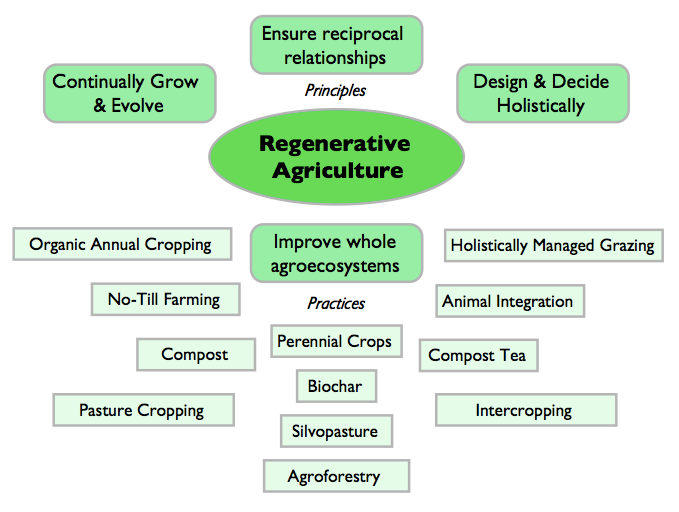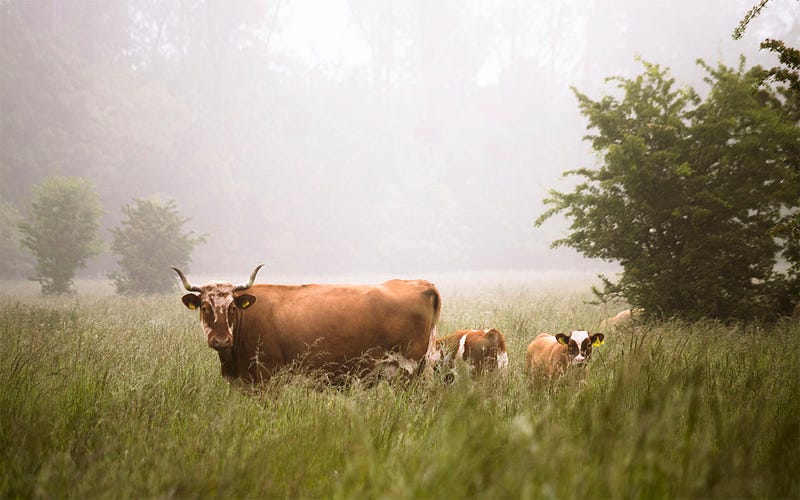
The term Regenerative Agriculture is cropping up all over the place. The annals of the internet are growing almost daily with articles, blog posts, tags, and tweets about farmers, corporations, and foundations shifting their attention toward the new hot thing: Regenerative Agriculture.
It is wonderful to see such a broad-scale conversation happening about agriculture, ecosystem health, and soil carbon. Unfortunately, in all the buzz, many of the definitions of Regenerative Agriculture that have emerged do not live up to its full potential.
Most focus solely on soil carbon, ignoring biodiversity, water cycles, and human wellbeing. And while soil fertility and carbon sequestration are hugely important to our planet’s capacity to grow food, they are the tip of the iceberg as far as what Regenerative Agriculture can mean and do for us.

After months of consultation with hundreds of farmers, ranchers, designers, and companies around the world, Terra Genesis International has developed a new and holistic definition of Regenerative Agriculture:
Regenerative Agriculture is a system of farming principles and practices that increases biodiversity, enriches soils, improves water cycles, and enhances ecosystem services.
Regenerative Agriculture aims to capture carbon in soil and aboveground biomass, reversing current global trends of atmospheric accumulation. At the same time, it offers increased yields, resilience to climate instability, and higher health and vitality for farming communities.
The system draws from decades of scientific and applied research by the global communities of organic farming, agroecology, Holistic Management, agroforestry, and permaculture.
All Regenerative Agriculture Practices are guided by Principles, which are uniquely applied to each specific climate and bioregion:

From these four emerge a diversity of Practices, which have been most extensively defined and studied for the first Principle. This definition presents these most-explored Regenerative Agriculture Practices, leaving space to articulate Practices for the other Principles in the future.
Some of the Regenerative Agriculture Practices that can progressively improve whole agroecosystems are No-Till Farming, Organic Annual Cropping, Compost & Compost Tea, Biochar & Terra Preta, Pasture Cropping, Managed Grazing (HM, Savory HM, AMP, MIG), Animal Integration, Aquaculture, Perennial Crops, Silvopasture, Agroforestry. (Here’s Sheldon Frith’s list for some diversity.)

A comprehensive list and description of climate-specific Regenerative Agriculture Practices is available in The Carbon Farming Solution: A Global Toolkit of Regenerative Agriculture (Toensmeier, 2016).
Regenerative Agriculture develops out of the living system of connection between humans and their ecosystem through agriculture. Like living systems, Regenerative Agriculture will evolve and grow.
This definition is a starting point: We welcome a global conversation to continue developing and improving it so we can effectively reverse climate change and regenerate the planet.
What are your thoughts on Regenerative Agriculture? What will happen if the “definition” only includes soil carbon? What’s the most important action you can take to grow adoption of Regenerative Agriculture in the world?

RESOURCES
- regenerativeagriculturedefinition.com
- regenerativeagriculturefoundation.org/
- regenerationinternational.org/why-regenerative-agriculture/
- lexiconoffood.com/definition/definition-regenerative-agriculture
- regenerativecacao.com
If you’re an email person, join my email list below and I’ll let you know first whenever a new post is ready.
And if you liked this article, head on over to Medium and give it a few ‘Claps‘!

